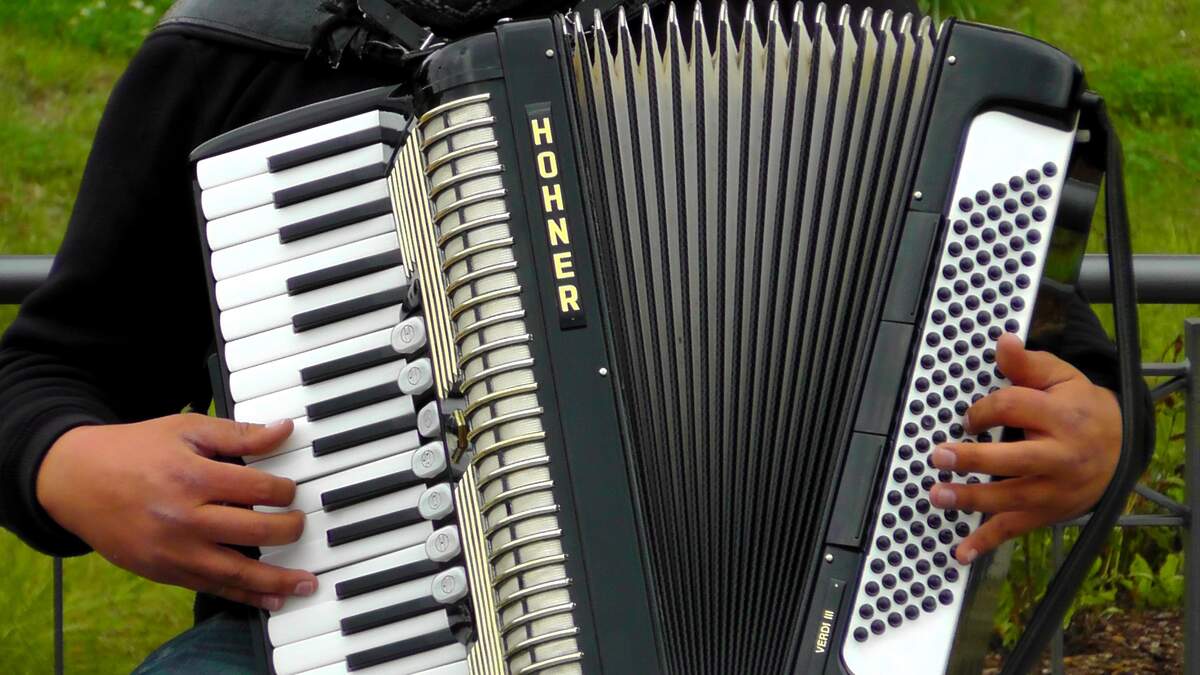

National Polka Day
Observed
annually on August 9th
Dates
Tags
Music & Sound
Hashtags
Sources
https://en.wikipedia.org/wiki/Polka
https://oddcalendar.blogspot.com/2012/08/roll-out-barrel-its-national-polka-day.html
https://web.archive.org/web/20130701110537/altiusdirectory.com/Society/national-polka-day.html
https://web.archive.org/web/20160326193245/examiner.com/article/kick-up-your-heels-it-s-national-polka-day
https://www.holidailys.com/single-post/2016/08/09/National-Polka-Day-in-the-USA
https://www.pbs.org/independentlens/polkatime/polka.html
The sound of an accordion and the sight of dancers moving across the floor―it could only mean one thing: polka! Polka is both a genre of music and a type of dance, and today we celebrate both. So strap on your dancing shoes, and open your ears to a sound that has stood the test of time!
First, the dance. Polka originated in Bohemia, which is now part of the Czech Republic. "Polka" likely comes from a Czech phrase for "half-step," which refers to the short half-steps (or hops) in the dance. There are various iterations of a story in which a peasant girl named Anna Slezak ( or Slezáková) came up with the dance, either in 1830 or 1834. A music teacher named Josef Neruda saw she was dancing to a traditional folk song—"Strýček Nimra koupil šimla," or "Uncle Nimra Bought a White Horse"—in a unique way. Slezak called her dance Maděra, and Neruda taught young men to dance to the song in the way she had. From there, the dance made its way to ballrooms.
Polka dancing made its debut in the ballrooms of Prague in 1835 and then spread around the globe. It made it to the ballrooms of Vienna in 1839, to Paris in 1840, then to England, and to the United States in 1844. It continued to be a popular ballroom dance until the late nineteenth century when other dances eclipsed it in popularity. As many Polish refugees arrived in the United States following World War II, there was a resurgence in popularity of both the dance and music, and it became the national and cultural dance of Polish immigrants.
Polka is a partner or couple's dance, performed in the face-to-face waltz position, or side by side with the man's arm around the woman's waist, with her hand on his shoulder. The basic polka step is done in four counts. It begins with weight put on the right foot and then a hop with that same foot. Next is a step forward with the left foot, and then the bringing of the right foot to the left, before another step forward with the left foot. With the dancer's weight now on the left foot, the position is held for a beat. This whole process is then repeated while using the opposite feet, with the left foot used for hops and the right foot used for steps forward. The dance is done in all directions and is fast-paced. Some dancers don't include the hop in their routine, while others do a version of it where they raise and lower their foot before doing the first step.
Of course, the dance is accompanied by polka music! Standard polka is accordion-centric, and bands also often have concertina, drums, saxophone, trumpet, clarinet, guitar, and bass. It follows a 2/4 beat, and polka songs often have four verses and a chorus. Song topics commonly cover love, loss, and food.
The three mainstream styles of polka music are Polish, Czech, and German. Polish originated in Chicago and has two sub-styles. "The Chicago Honky" features a clarinet and one trumpet, while the "Chicago Push" has an accordion, concertina, bass, drums, and usually two trumpets. There are many other styles of polka music. Here are some of the most popular:
- The North American "Slovenian-style" polka is particularly popular in Cleveland. It is fast and features any combination of piano accordion, chromatic accordion, and button box accordion.
- The North American "Dutchmen-style" polka has its roots in the American Midwest. It often has a banjo, as well as a tuba, which gives it an oom-pah sound.
- The "Conjunto-style" polka, also known as norteño, has its roots in Northern Mexico and Texas.
- Peruvian polka is especially popular in Lima.
- "Polca" is dominant in the Pampas of Argentina. It has a fast beat and usually is played on acoustic guitar, electric or acoustic bass, and accordion, and is sometimes accompanied with percussion.
- Choro music of Brazil is heavily influenced by polka.
- "Polca" music gained popularity in Ireland in the late nineteenth century. Hundreds of Irish polka tunes exist and are often played with a fiddle and a button accordion, and at a fast rhythm with off-beat accents. After gaining popularity in Ireland, polka music made its way to the Nordic countries.
- In the 1980s and 1990s, American bands began combining rock with polka, creating what was dubbed as "punk polka," "alternative polka," or "San Francisco-style polka."
- Some classical composers have even incorporated polka into their music.
Today, polka continues to be a popular genre of music and dance in many European countries, where it is performed by folk artists. Around the world, polka festivals have many types of polka dances and music, as well as traditional food and beer. In the United States, weekly polka dances are still held in many areas with large populations of immigrants of Central European origin. The United States has the International Polka Association, which preserves the cultural heritage of polka music and honors its musicians with the Polka Music Hall of Fame. In Ohio, there is the similarly-named, but separate, Polka Hall of Fame. The legacy of polka in the United States is further preserved by the United States Polka Association and the Texas Polka Music Museum. On National Polka Day, both the dance and the many forms of polka music from all over the world are celebrated!
How to Observe National Polka Day
Celebrate the day with polka music and the polka dance! Here are some ideas on how to celebrate:
- Look for any polka festivals or events happening today.
- Learn how to polka, and do some polkaing at home or at a place where an event is being held.
- Check out 247PolkaHeaven.com, where you can listen to polka music 24/7, and see information about upcoming polka festivals and events.
- Listen to some polka music. Check out artists such as Frankie Yankovic, Eddie Blazonczyk, and Walter Ostanek. You could even listen to some Weird Al Yankovic or Lawrence Welk.
- Watch the film Polka Time.
- Watch Polka Varieties, a television show that aired in some parts of the United States from the 1950s through the 1980s.
- Learn about the International Polka Association. You could even join!
- Visit the Polka Hall of Fame Museum in Ohio.
- Learn about the United States Polka Association, and consider becoming a member.
- Visit the Texas Polka Music Museum.
- Make plans to attend next year's National Polka Festival.





















